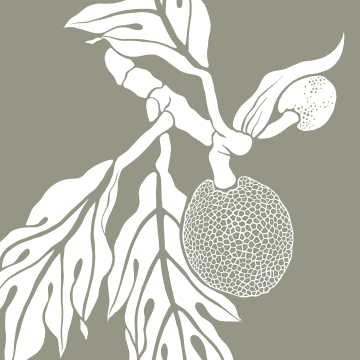In order to make all but the ripest ʻulu palatable you need to prepare it for use. This is similar to preparing kalo, but a little less dire if you mess it up.
The trick to preparing ʻulu is knowing when it’s the correct ripeness for your recipe and use. The riper an ʻulu gets, the more sweet it is. As a general guideline, firm-to-the-touch breadfruit are more starchy. Soft ʻulu will be sweet and get sweeter the longer they sit.
A lot of people aim to cook their ʻulu when the fruit is just turning soft at the top near the stem. This yields a starchy flavor and most of the latex has dissipated. If you try to cut breadfruit before this, your knife will get very sticky and make a big mess.
If you cut through the ʻulu and the knife comes out clean, you’ve got the timing right. It takes practice. An ʻulu can go from starchy (hard) to sweet (soft) in a couple of hours.
